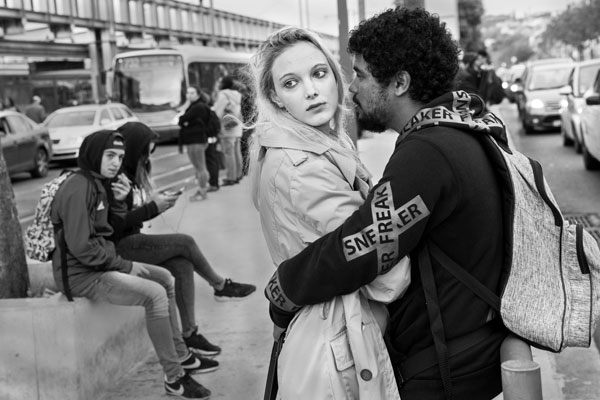Getting The Framing Streets To Work
Getting The Framing Streets To Work
Blog Article
The 10-Minute Rule for Framing Streets
Table of ContentsHow Framing Streets can Save You Time, Stress, and Money.3 Simple Techniques For Framing StreetsThe 10-Second Trick For Framing StreetsThe Basic Principles Of Framing Streets Our Framing Streets PDFsRumored Buzz on Framing Streets
, generally with the purpose of recording photos at a crucial or emotional minute by cautious framing and timing. https://framing-streets.jimdosite.com/.
Unknown Facts About Framing Streets
Susan Sontag, 1977 Street photography can concentrate on individuals and their habits in public. In this regard, the street photographer is comparable to social docudrama digital photographers or photojournalists who additionally work in public areas, but with the goal of catching relevant events. Any one of these photographers' pictures might capture individuals and residential property noticeable within or from public places, which typically requires browsing ethical issues and laws of privacy, safety, and residential or commercial property.
Representations of everyday public life form a genre in practically every duration of globe art, starting in the pre-historic, Sumerian, Egyptian and very early Buddhist art periods. Art taking care of the life of the street, whether within views of cityscapes, or as the dominant motif, appears in the West in the canon of the North Renaissance, Baroque, Rococo, of Romanticism, Realistic look, Impressionism and Post-Impressionism.
Not known Incorrect Statements About Framing Streets
Louis Daguerre: "Blvd du Temple" (1838 or 1839) In 1838 or 1839 the initial photo of figures in the street was recorded by Louis-Jacques-Mand Daguerre in among a pair of daguerreotype sights taken from his workshop home window of the Boulevard du Holy place in Paris. The second, made at the elevation of the day, shows an uninhabited stretch of street, while the various other was taken at regarding 8:00 am, and as Beaumont Newhall reports, "The Boulevard, so constantly full of a moving bunch of pedestrians and carriages was perfectly singular, except a person that was having his boots combed.
His boots and legs were well defined, however he is without body or head, due to the fact that these were in motion." Charles Ngre, waterseller Charles Ngre. https://www.gaiaonline.com/profiles/framingstreets1/46535055/ was the first digital photographer to achieve the technical class needed to register individuals in movement on the street in Paris in 1851. Digital Photographer John Thomson, a Scotsman functioning with journalist and social lobbyist Adolphe Smith, released Road Life in London in twelve month-to-month installments starting in February 1877
More About Framing Streets
Eugene Atget is considered a progenitor, not because he was the first of his kind, but as a result of the popularisation in the late 1920s of his record of Parisian streets by website here Berenice Abbott, who was influenced to embark on a comparable paperwork of New York City. [] As the city established, Atget assisted to promote Parisian streets as a worthy subject for photography.

The Basic Principles Of Framing Streets
Martin is the initial taped professional photographer to do so in London with a masked cam. Mass-Observation was a social research organisation established in 1937 which aimed to record day-to-day life in Britain and to record the responses of the 'man-in-the-street' to King Edward VIII's abdication in 1936 to wed divorce Wallis Simpson, and the succession of George VI. The chief Mass-Observationists were anthropologist Tom Harrisson in Bolton and poet Charles Madge in London, and their initial record was generated as the publication "May the Twelfth: Mass-Observation Day-Surveys 1937 by over 2 hundred observers" [] Home window cleaner at Kottbusser Tor, Berlin, by Elsa Thiemann c. 1946 The post-war French Humanist Institution photographers discovered their topics on the street or in the bistro. Between 1946 and 1957 Le Groupe des XV annually exhibited work of this kind. Andre Kertesz. Circus, Budapest, 19 May 1920 Road digital photography formed the major material of 2 events at the Museum of Modern Art (Mo, MA) in New York curated by Edward Steichen, Five French Professional Photographers: Brassai; Cartier-Bresson, Doisneau, Ronis, Izis in 1951 to 1952, and Post-war European Digital Photography in 1953, which exported the principle of road digital photography internationally.

Getting My Framing Streets To Work
The recording equipment was 'a concealed video camera', a 35 mm Contax concealed under his coat, that was 'strapped to the upper body and linked to a long cord strung down the ideal sleeve'. His job had little contemporary influence as due to Evans' level of sensitivities about the creativity of his project and the personal privacy of his topics, it was not published till 1966, in the publication Several Are Called, with an introduction created by James Agee in 1940.
Helen Levitt, then an educator of young kids, linked with Evans in 193839. She documented the temporal chalk drawings - Lightroom presets that were component of children's street society in New york city at the time, as well as the kids that made them. In July 1939, Mo, MA's brand-new photography section consisted of Levitt's job in its inaugural exhibitionRobert Frank's 1958 publication,, was substantial; raw and commonly out of emphasis, Frank's images questioned traditional digital photography of the moment, "challenged all the formal policies set by Henri Cartier-Bresson and Pedestrian Evans" and "flew in the face of the wholesome pictorialism and sincere photojournalism of American publications like LIFE and Time".
Report this page